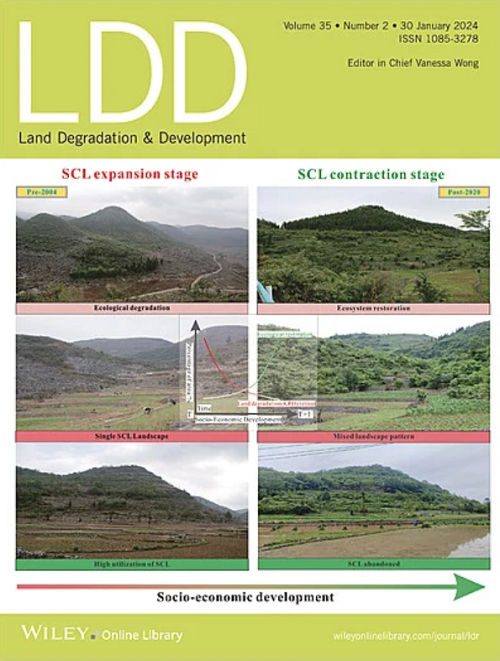Vegetation Optimization Methods Considering Water Supply Security, Vegetation Carbon Sequestration, and Sediment Reduction Benefits: A Case Study of the Yanhe River Basin on the Loess Plateau
IF 3.6
2区 农林科学
Q2 ENVIRONMENTAL SCIENCES
引用次数: 0
Abstract
Since the implementation of the Grain for Green program on the Loess Plateau, vegetation restoration has achieved a remarkable effect. However, large-scale vegetation restoration will inevitably result in massive water resources consumption in arid and semi-arid regions, which will increase the risk of water security for regional social and economic development. How to safeguard the water resources required for socioeconomic development in the background of vegetation restoration and simultaneously maximize the benefits of water adaptation-sediment reduction-carbon enhancement on the Loess Plateau represents a critical scientific challenge to be addressed in future ecological construction efforts. Based on this, this study aimed at the Yanhe River Basin (YRB), a representative basin for vegetation restoration on the Loess Plateau, and creatively proposed a vegetation optimization regulation method with water supply capacity as the constraint while aiming to maximize the benefits of carbon sequestration and sediment reduction. Results indicated that under the current vegetation pattern, water deficit in the YRB by 2030 would be 27.22% and 3.00% under the SSP2-4.5 and SSP5-8.5 scenarios, respectively. By optimizing the original vegetation pattern—reducing high water-consuming vegetation, increasing drought-tolerant shrubs (797–1006 km2), and decreasing fractional vegetation coverage (FVC) by 4.00%–5.84% under the SSP2-4.5—the basin's water supply (Ws) would increase by 41.36%–44.13%, while net primary productivity (NPP) would decrease by 1.83%–2.39% and soil erosion (SED) would increase by 2.86%–3.71%. Under the SSP5-8.5 scenario, by increasing FVC (6.03%–8.00%), increasing drought-tolerant shrubs (813–1295 km2), and reducing forest and grassland, the water resources required for basin's socioeconomic development would be guaranteed (1.60 × 108m3–1.61 × 108 m3). The optimized vegetation scheme also significantly increased NPP (13.38%–14.64%) and decreased SED (13.28%–15.24%) under the SSP5-8.5. The results offer valuable insights for the development of vegetation management programs and provide critical technical support for sustainable water resource management on the Loess Plateau.求助全文
约1分钟内获得全文
求助全文
来源期刊

Land Degradation & Development
农林科学-环境科学
CiteScore
7.70
自引率
8.50%
发文量
379
审稿时长
5.5 months
期刊介绍:
Land Degradation & Development is an international journal which seeks to promote rational study of the recognition, monitoring, control and rehabilitation of degradation in terrestrial environments. The journal focuses on:
- what land degradation is;
- what causes land degradation;
- the impacts of land degradation
- the scale of land degradation;
- the history, current status or future trends of land degradation;
- avoidance, mitigation and control of land degradation;
- remedial actions to rehabilitate or restore degraded land;
- sustainable land management.
 求助内容:
求助内容: 应助结果提醒方式:
应助结果提醒方式:


